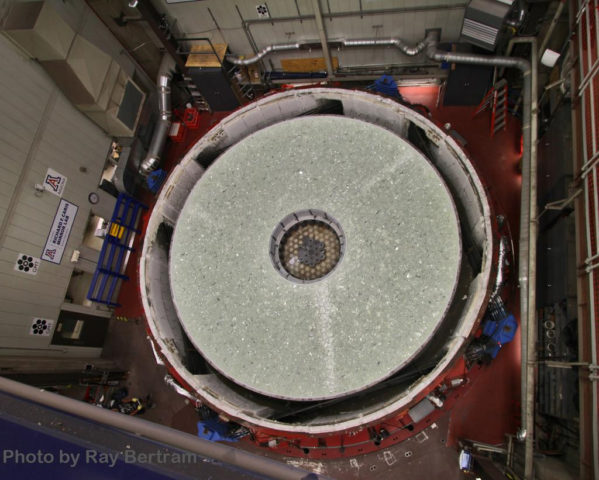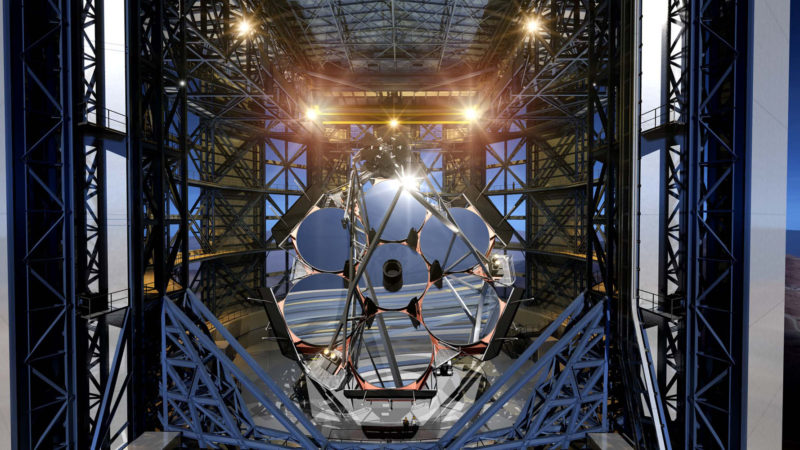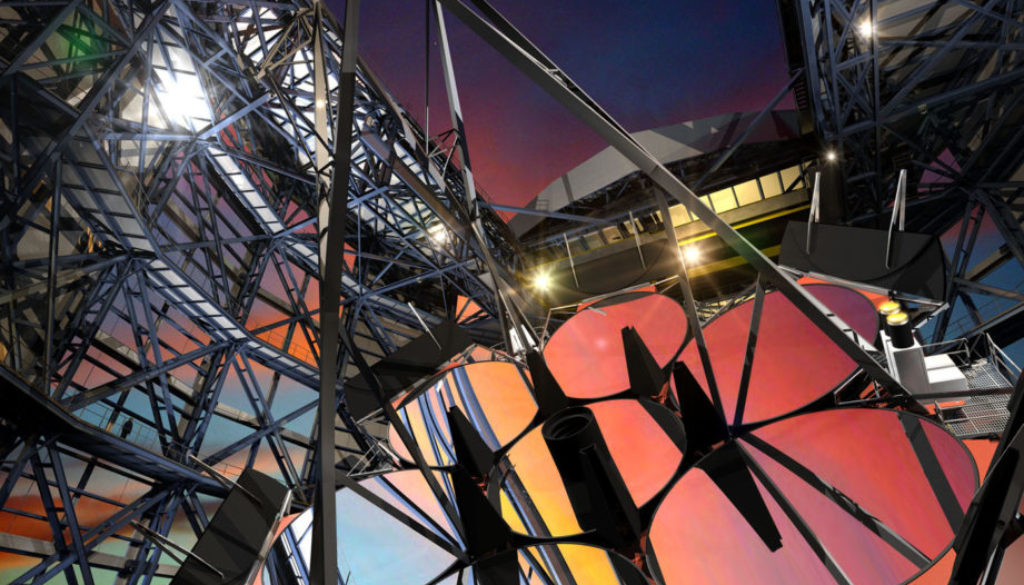Giant Magellan Telescope to Cast Milestone Fourth Mirror
As one of 11 international partners in the Giant Magellan Telescope, Texas A&M University is part of important astrophysical history set to go down today (Friday, Sept. 18) beneath a football stadium in Tucson — the casting of the telescope’s fourth primary mirror at the University of Arizona’s Richard F. Caris Mirror Lab at Steward Observatory.
Earlier this week, lab personnel loaded roughly 21 tons of borosilicate glass into a massive steel mold for the history-making 8.4-meter diameter mirror, set to be cast in conjunction with today’s lab renaming and rededication ceremony honoring its new namesake, Richard F. Caris. The Scottsdale businessman recently donated $20 million to the University of Arizona to support its partnership in the construction of the GMT.
Texas A&M astronomer and longtime Giant Magellan Telescope Organization (GMTO) Board Member Darren DePoy says that, in addition to being the only mirror segment with a central hole, the fourth mirror carries the added distinction of rendering the telescope operational if necessary, thanks to flexibility in its design that will allow for it to function even as the rest of the mirrors still are being fabricated.


“There is special significance to the fourth mirror,” said DePoy, deputy director of the George P. and Cynthia Woods Mitchell Institute for Fundamental Physics and Astronomy and director of Texas A&M’s Munnerlyn Astronomical Instrumentation Laboratory. “It will be the central unit. Without it, the other mirrors would be much more difficult to bring together to function as a single telescope. Also, our baseline plan starts the operations of the GMT with just these four mirrors, which will all have been cast once this one is complete.”
While the first primary mirror is packaged within the lab and ready for eventual transport to Chile, the second and third mirrors currently are at various stages of polishing. The first two mirrors, known as GMT1 and GMT2, are named for 1940 Texas A&M distinguished petroleum engineering graduate George P. Mitchell ’40 and Cynthia Woods Mitchell, respectively. The Mitchells, in combination with the Cynthia and George Mitchell Foundation, have committed a total of $33.25 million thus far to the $1 billion project, including nearly $21 million on behalf of Texas A&M.
The GMT, set for construction at the Las Campanas Observatory site in the Atacama Desert in northern Chile, will be a member of the next class of super giant Earth-based telescopes that promises to revolutionize our view and understanding of the universe by enabling astronomers to look deeper into space and farther back in time than ever before. When completed, the seven-mirror, 25-meter colossus will feature 10 times the resolving power of NASA’s Hubble Space Telescope and more than six times the light-gathering area of the largest optical telescopes in existence today.
Described as being “predicated on modern technology,” the GMT will merge lasers with an adaptable optics system that hinges on state-of-the-art astronomical instrumentation, including first-light devices and measurement systems being built and assembled within Texas A&M’s Munnerlyn Lab. The telescope is expected to see first light in 2021 and be fully operational by 2024.
The Steward Observatory Mirror Lab is the only facility in the world where mirrors of this size are being made. The GMT mirrors are considered to be the greatest astronomical optics challenge ever undertaken, given that each weighs roughly 20 tons, yet requires a precision-smoothed surface to within a twentieth of a wavelength of light.
Like other mirrors produced by the lab, those for the GMT are designed to be spun cast, thereby achieving the basic front surface in the shape of a paraboloid — the shape taken on by water in a bucket when the bucket is spun around its axis; the water rises up the walls of the bucket while a depression forms in the center. The pre-assembled mold creates a lightweight honeycomb glass structure that is very stiff and quickly adjusts to changes in nighttime air temperature, each resulting in sharper images.
Watch a short video discussing the mirror-making process:
For more information about the GMT, including design, scope and projected science, visit www.gmto.org.
To learn more about Texas A&M astronomy, visit here.
Read a past blog entry detailing some of the project’s history relevant to Texas A&M and the State of Texas.
Read a nice recap feature on a previous mirror casting from the University of Arizona’s Office of University Communications.
Read about the remarkable success of the first mirror polishing, courtesy of the Steward Observatory Mirror Lab.
# # # # # # # # # #
About the Giant Magellan Telescope Organization: The Giant Magellan Telescope Organization (GMTO) manages the GMT project on behalf of its international partners: Astronomy Australia Ltd., The Australian National University, Carnegie Institution for Science, Fundação de Amparo à Pesquisa do Estado de São Paulo, Harvard University, Korea Astronomy and Space Science Institute, Smithsonian Institution, Texas A&M University, The University of Arizona, The University of Chicago, and The University of Texas at Austin. For more information, visit www.gmto.org.
About Research at Texas A&M University: As one of the world’s leading research institutions, Texas A&M is at the forefront in making significant contributions to the storehouse of knowledge, including that of science and technology. Research conducted at Texas A&M represented annual expenditures of more than $820 million in FY 2013, ranking Texas A&M in the top 20 of the National Science Foundation’s most recent survey of research and development expenditures among U.S. colleges and universities. Recently reported FY 2014 research expenditures exceed $854 million. That research creates new knowledge that provides basic, fundamental and applied contributions resulting in many cases in economic benefits to the state, nation and world. To learn more, visit http://research.tamu.edu.
-aTm-
Contact: Shana K. Hutchins, (979) 862-1237 or shutchins@science.tamu.edu or Dr. Darren DePoy, (979) 862-2082 or depoy@physics.tamu.edu
The post Giant Magellan Telescope to Cast Milestone Fourth Mirror appeared first on College of Science.
